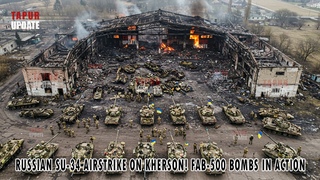The Russian German War | Part 1 | Full Episode
► Subscribe to get all the latest content
The Eastern Front of World War II was a theatre of conflict between the European Axis powers against the Soviet Union (USSR), Poland and other Allies, which encompassed Central Europe, Eastern Europe, Northeast Europe (Baltics), and Southeast Europe (Balkans) from 22 June 1941 to 9 May 1945. It was known as the Great Patriotic War in the Soviet Union and some of its successor states, while everywhere else it was called the Eastern Front.
The battles on the Eastern Front of the Second World War constituted the largest military confrontation in history. They were characterised by unprecedented ferocity and brutality, wholesale destruction, mass deportations, and immense loss of life due to combat, starvation, exposure, disease, and massacres. Of the estimated 70–85 million deaths attributed to World War II, around 30 million occurred on the Eastern Front, including 9 million children. The Eastern Front was decisive in determining the outcome in the European theatre of operations in World War II, eventually serving as the main reason for the defeat of Nazi Germany and the Axis nations.
The two principal belligerent powers were Germany and the Soviet Union, along with their respective allies. Though never sending in ground troops to the Eastern Front, the United States and the United Kingdom both provided substantial material aid to the Soviet Union in the form of the Lend-Lease program along with naval and air support. The joint German–Finnish operations across the northernmost Finnish–Soviet border and in the Murmansk region are considered part of the Eastern Front. In addition, the Soviet–Finnish Continuation War is generally also considered the northern flank of the Eastern Front.
Licensed through the Alba Media Group
► Connect with us online and our socials:
Website:
Facebook:
Twitter:
TikTok: @4digitalmedia









![Little Wolf | Волчонок | Кавер на Русском | ZeroVoice [EPIC: The Musical]](https://sun9-63.userapi.com/qFKOSDCzfT57xWFdFbqUanZvfoMmx4xipQ1Qyw/OrtodQAJJsQ.jpg)













